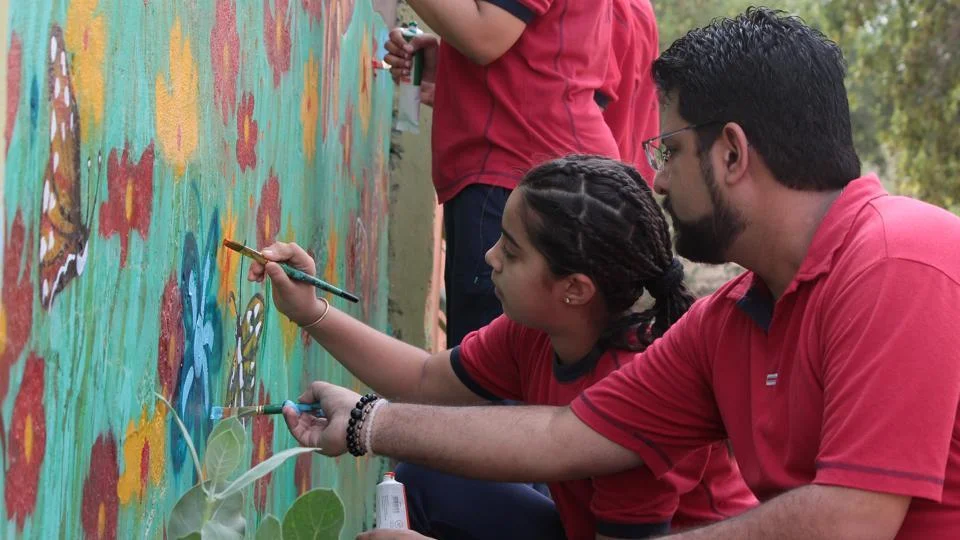Involve people in designing and planning public places
/A city and its spaces are constantly evolving to adapt to its residents. No space is created once and for all and no usage is set in stone. This article was originally written by Kalpana Viswanath and published on https://www.hindustantimes.com/opinion/under-open-sky-column/story-fOkqR17UivV7GV4ysYgo4M.html.
Volunteers working in the butterfly park at Tau Devi Lal Biodiversity Park, in Gurugram, June 8, 2018. (Shivam Saxena/ HT File Phot o)
I went for a walk along the forest area near Suncity last weekend. It felt wonderful to be out and see other people using the space also. My walking companion, a veteran of walking the city, pointed out interesting facts and elements that I had no idea about. This road had only been built a few years ago. A city and its spaces are constantly evolving and changing to adapt to its residents and users. No space is created once and for all and no usage is set in stone. As a community grows and evolves, it needs change and development needs to respond to this.
Placemaking is a term used to describe how city spaces can be imagined and planned by involving the community. Placemaking as a technical term refers to a collaborative process to maximise the value of spaces for the community. It facilitates creative patterns of use and is aimed at strengthening the connection between people and places. It propounds that the happiness and wellbeing of people is central to the success of a space. It could be an idea like Raahgiri, redesigning a plaza, a children’s park, a food street, market, mela etc. but the key element is to ensure community participation.
The roots of the idea of placemaking lie in the idea propounded by Jane Jacobs, the famous American urbanist of the 1960s who propagated that citizens should take ownership of the streets and that streets should have a vibrant public life.
Placemaking is used to address basic urban problems such as traffic, unused spaces, derelict parks, unsafe bus stops etc. The aim is to find people-centric and collective solutions to place-related problems, hence the term placemaking.
Placemaking has a concept of Power of 10+ which states that all cities should have 10 destinations where people want to be, and any public place such as a square or plaza should have 10 places for people to use, such as a café, children’s play area, places to sit and meet friend and such. Can we count 10 places in Gurgaon that are destinations where people want to go to (malls cannot be included, as they are privatised public spaces)? There is the Bio Diversity Park, Leisure Valley (which is no longer really a destination), the food trucks near Sector 29 , Tau Devi Lal Park and a stretch near Galleria Market.
Human interaction at the local scale is important for cities to flourish. Further, placemaking also states that a great public space will have four characteristics—they are accessible and well-connected, they project a good image, they attract people and they are sociable so people keep returning.
Good public spaces also promote economic activity and allow for people of different ages and groups to meet and mingle and create a sense of community.
Placemaking has been used in cities around the world. An interesting project was carried out in Jakarta, Indonesia. While traditionally the city used to have open air cinemas where people would gather, in recent times cinemas had shifted to malls. In 2013, a non-profit organisation collaborated with an architectural firm to build a temporary outdoor cinema amphitheatre using local and inexpensive materials. There were tables provided for people to set up a picnic. The aim of this was to bring cinema to people who could not afford the expensive tickets in a multiplex and activate a public space and revitalise a tradition of cinema which had been lost. It was extremely popular and people went in droves.
We have temporary public spaces such as ‘melas’ which have been traditionally part of our landscape. Even today, people throng these when they are given the opportunity. Places where people can gather and interact are the very definition of a city and we need many more of these in Gurgaon. To quote Jane Jacobs, “Cities have the capability of providing something for everybody, only because, and only when, they are created by everybody”.
(Kalpana Viswanath works on issues of women’s safety and rights in cities)



